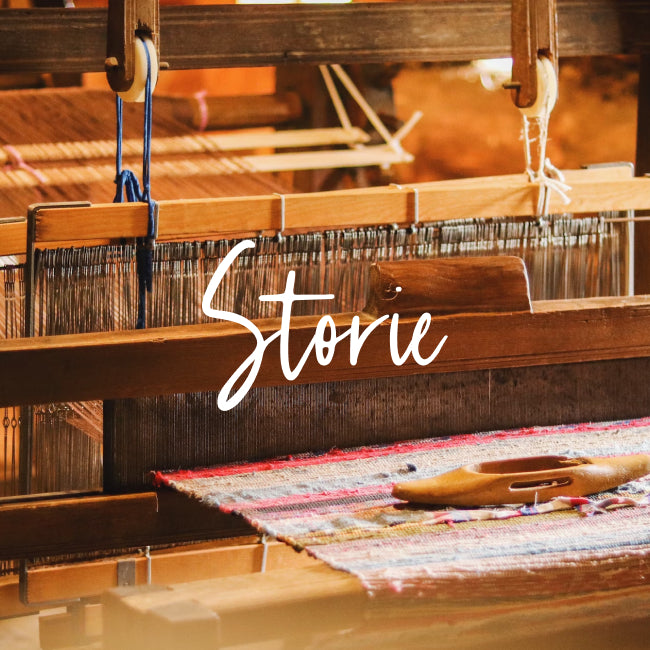CRAFT STORY 5#JAVA HAND LOOM
In a remote rural region of central Java in Indonesia there is small but very productive workshop, where up to 40 men and women work on traditional handlooms, weaving the most beautiful thick, textured cotton.

“Yoga inherited the workshop from his late father Rachmand, who was well known for his textile craft." He is the third generation of weavers to continue the long tradition of handloom weaving in the region, and one of the few which has survived the invasion of the power loom in Indonesia, explains Patricia Knouw, the founder of Original Home.
She discovered this group of crafts people when she was driving around an isolated area of central Java, and immediately spotted the quality of the weaving, and talent of the weavers.
I asked Patricia if this soft, heavy, hand loomed cotton was a clever evolution of the traditional craft, “No!” she exclaims “It’s very much traditional. We began discussing possible products designs, and I pointed out an old type of weaving, much like this one, and Yoga didn’t really want to do it, he thought it was too old fashioned. However, I asked we could try it with recycled hand spun cotton, and it has been a success”.

This is another remarkable facet of this product. It is entirely made from recycled, hand spun cotton. Complete, sustainable and authentic luxury.
“The waste cotton products are made from leftover cotton fibres from the cotton industry. A lot of cotton waste is generated in the process of making yarn, there is also cotton collected at factories where they make products such as make-up pads and swabs”.

Getting high quality waste material is a challenge, so Original Home sources and funds these materials to be sure their artisans are working with the best possible materials. “ It’s a low impact sourcing and production process. Everything is collected and sorted manually. The leftover cotton is collected by hand, sorted and hand-spun into cotton threads. If it is dyed, it is hand dyed, and sun dried.” There is no electricity used in the actual processing of the material, and little water is used.

It’s a very sustainable cloth, and a product which supports craft traditions, “The workshop provides local artisans with the opportunity to practice their traditional craft from yarn spinning and hand dying to hand weaving. The majority of the artisans are elderly people that need additional income to support themselves but have limited opportunities for employment. They work in the workshop or from their own homes.”
I ask Patricia, if it’s mainly older craftspeople doing this work, does she think the craft will survive, and is there a way to pass on the tradition to a younger generation?
“ that’s a difficult question, in the more rural communities, there are so many people who do not have any work, many people earn money crop harvesting, but this is seasonal work and they need to find ways to supplement their income. It’s important that they can learn a craft to do this....If there are enough people ready to pay the additional cost for a sustainably produced textile.. I think interest in the craft will come back, when people will value it correctly."
This is one of the motivators for Patricia, before she started Original Home “ we were exporters from Indonesia for other brands. My husband is Indonesian, and over the years I saw how difficult it was for rural communities to earn enough money to feed their families; they were working with bad materials, and they could have been making much better products. I decided I wanted to share the stories of how these products were made, but it was difficult to share the story, and to manage the sustainability of product when you are selling through other brands."
“I decided I only want to work for a social cause. We started working from the materials available, instead of product design. We started working with people rather than product design. We design from material and people. “
It’s an original way to design a product, and an ethos which creates beautiful things which have both a story and sense to them.
See more from the Original Home Collection here.














